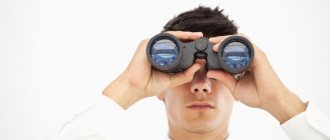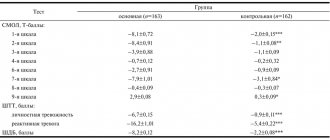Within the framework of knowledge of the surrounding reality, scientific tools offer many means of empirical, that is, experimental research. The experiment is one of the most effective, since it is based on the principles of repetition and evidence. More importantly, the experimental method allows you to study individual phenomena independently of random factors, which distinguishes it from traditional observation.
Technology of the method as a research tool
Compared to practical knowledge through observations, an experiment is organized as a prepared study, which is given a specific task with pre-established parameters for interpreting the result. An important feature is the participation of the researcher in the process of such cognition. In addition, the method of scientific experiment, precisely due to the possibility of organizing its repeated conduct under the same conditions, is distinguished by accuracy and more reliable information. In this way, it is possible to establish causal connections between individual elements of the experiment, identifying other properties with patterns in a particular phenomenon.
When organizing experiments, measuring instruments and technical equipment are often used to ensure the correctness of the data. The classic description of the experimental method can be presented as a laboratory research process, since it is completely controlled by the author, but there are other concepts of this method of understanding reality, which will be discussed below.
Classification of experiments based on the nature of their influence
Taking into account this criterion, there are the following types of experiments in psychology:
- Stater. During such an experiment, the specialist does not change any properties of the participant, does not seek to form new qualities in him or develop those that he has. Teacher-researchers very often use ascertaining experiments in developmental psychology. It allows you to establish the state of the existing problem and record the fact that there is a connection between the existing phenomena. The purpose of an ascertaining experiment may be, for example, to identify the degree of influence of the family on the process of developing the personality of a child attending primary school.
- Formative. This is one of the research methods that is widely used by specialists and teachers. A formative experiment involves a person obtaining certain qualities that are specified by a specialist. The necessary conditions are specially created for this. The results obtained do not raise any doubts, since it is obvious that they were formed during the implementation of the work. A formative experiment is used for an in-depth study of the process of personality formation, as well as all stages of its occurrence. In addition, this method is most effective when testing new methods of education and innovative technologies. A formative experiment is not always carried out according to a pre-planned plan. First of all, the research problem is determined, and only after that I formulate a hypothesis, create a work program and conduct tests. The entire process is closely monitored, and its results are recorded for further understanding, which will allow the formulation of conclusions. Typically, either two people or two groups of people are involved in a formative experience. Moreover, one of them is considered experimental, and the other – control. Participants in psychological experience are given tasks that contribute to the formation of a certain quality. The control group is not given such a task. After completing the formative experiment, researchers conduct a comparative analysis of the results obtained and evaluate them.
- Control. This type of work carried out by specialists is a repeated measurement of certain indicators of the state of an object (a person or a group of people) to compare them with those that were recorded before the start of the experiment. The data obtained is also compared with those obtained by a group of people who did not receive tasks.
Experimental models
Typically, perfect and random experiments are distinguished. The first includes a model of organization, which for one reason or another cannot be implemented in practice, that is, under conditions of scientific observation. This technique not only helps to complete the task set regarding the study of the object, but also helps to improve the experimental method by identifying individual errors. As for the random experiment model, it is based on the concept of a random experiment, which may correspond to a real test, but its result will be unpredictable. The random experimental method requires compliance with a wide range of requirements. For example, the prepared mathematical research model in it must adequately describe the experiment. Also, when setting up a problem, researchers precisely determine the model within which the initial mathematical data for the experiment and the results obtained will be compared.
Types of experimental research in psychology
All psychological studies are divided into several groups:
- Theoretical research.
- Empirical research.
- Applied research.
Theoretical studies can be and, in fact, are included in any research activity, since they are focused on collecting information about the object of research and developing its theoretical basis.
Empirical research is based on the perception of the surrounding world by the senses, real observation of the objects and processes being studied, as well as the creation of experimental conditions that exactly correspond to the mental process being studied. At the same time, the study combines various methods and techniques.
Applied psychological research is focused on solving a certain group of problems of psychological orientation, resolving problems that arise in various spheres of an individual’s life.
Each psychological study, regardless of its group affiliation, consists of a variety of experimental methods.
The following types are distinguished:
- A natural experiment is carrying out research work under real operating conditions of the test object. Such an experiment is carried out in various areas of human activity, making it possible to understand and evaluate the psychological factors of committing a particular act, to evaluate their dynamics and structure;
- A laboratory experiment is conducting research in unreal conditions of the existence of an object, and in artificial conditions as close as possible to them. The results of the experiment are subsequently applied and evaluated in the real world;
- Formative experiment - conducting research based on a combination of teaching methods, education, training, and psychological analysis. The methods used to implement this experiment include various trainings, role-playing and business games, and the construction of situational models. This method is of great importance in psychology, since it allows not only to obtain some data, but also creates conditions for the personal development of the objects of experimental activity.
The results of any psychological experiment require a mathematical justification. It creates positive conditions for an adequate interpretation of facts. In addition, this makes it possible to determine indicators that affect the object of research and its parameters, to identify patterns of development of a particular process, situation, object, and to find areas of the expected effect of experimental activity.
What types of experimental method is divided into?
In practice, physical, computer, mental and critical experiments are most often used. The most common physical experiment is to understand nature. Thanks to such experiments, in particular, erroneous hypotheses of physics that were studied as part of theoretical research are revealed. Computer experiments are connected to the computer process. During testing, specialists process initial data about a specific object, resulting in information about the identified properties and characteristics. The thought experiment method can affect various fields of study, including physics and philosophy. Its fundamental difference is the reproduction of the conditions of reality not in practice, but in the imagination. In turn, critical experiments are not aimed at studying specific objects or phenomena, but at confirming or refuting a certain hypothesis or theory.
Classification by possible influence
According to this characteristic, there is also a certain gradation of psychological experiences. In this case, the following are distinguished:
— provoked research;
- an experiment that is referred to afterwards.
Provoked research is classic. When conducting this experiment, a specialist independently changes the experimental conditions. That is why those types of reactions that are observed in the test subject are considered provoked.
The experiments referred to are experiments in which there is no intervention by the researcher. This method is used in cases where the impact on the subject can cause serious psychological or physiological disturbance.
Features of psychological experiments
A separate group of experiments is represented by the psychological sphere, which determines its specificity. The main subject of study in this direction is the psyche. Accordingly, the conditions for conducting research will be directly determined by the life activity of the subject. And here we can note some contradiction with the basic principles of the method under consideration as such. Compared to other types of research, one cannot count on complete control and creation of test conditions. One can only proceed from biased data provided by a psychological experiment. The method of psychological research also does not allow us to isolate one of the processes of mental activity, since experimental influences affect the body as a whole. Similar studies can be carried out on both humans and animals. In the first case, the conditions of the test sometimes include initial instruction for the subject.
Research stages
Psychological experiments are carried out in a certain sequence. A complete experiment consists of several stages:
- Statement of the main problem.
- Working with scientific literature.
- Clarification of the hypothesis, identification of the main variables.
- Selection of relevant psychological tools to influence the psyche.
- Planning the actions to be carried out.
- Depending on which plan is assigned, subjects are distributed into separate groups.
- Conducting the experiment.
- Initial processing of the received data.
- In-depth processing, preparation of statistics.
- Preparation of conclusions.
After conducting an experiment, researchers compile reports and write scientific documents.
Natural and laboratory experiments
This division is also included in the concept of a psychological experiment. Natural research can be correlated to a certain extent with scientific observation, since in this case minimal interference in the course of the mental activity of the subject is assumed. By the way, this is where the significant advantage of the natural method comes from. The subject, due to the lack of interference in his life activity during the experiment, can remain in the dark. That is, the fact of conducting the research will not affect it in any way. On the other hand, due to the lack of control, this method of scientific experiment in psychology is considered ineffective. Opposite characteristics also determine the advantages of a laboratory experiment. In such studies, the tester can, if possible, artificially organize the learning process, focusing on specific facts that interest him. But even in this case, the need for close interaction between the researcher and the subject determines the subjectivity of the result obtained.
General information
Robert Woodworth, who published his classic textbook on experimental psychology (Experimental psychology), defined an experiment as a structured study in which the researcher directly changes some factor (or factors), holds the others constant, and observes the results of systematic changes. He considered the control of the experimental factor
, or in Woodworth's terminology, the "independent variable", and tracking its effect on
the observed consequence
, or "dependent variable". The experimenter's goal is to keep all conditions constant except one—the independent variable.
In a simplified example, the independent variable can be considered as a relevant stimulus
(
St(r)
), the strength of which is varied by the experimenter, while the dependent variable is the reaction (
R
) of the subject, his psyche (
P
) to the influence of this relevant stimulus.
However, as a rule, the desired stability of all conditions, except for the independent variable, is unattainable in a psychological experiment, since almost always, in addition to these two variables, there are also additional variables, systematic irrelevant stimuli
(
St(1)
) and random stimuli (
St(2)
), leading to systematic and random errors, respectively. Thus the final schematic representation of the experimental process looks like this:
Therefore, in an experiment, three types of variables can be distinguished:
- Independent variable
- Dependent Variable
- Additional variables (or external variables)
So, the experimenter is trying to establish a functional relationship between the dependent and independent variables, which is expressed in the function R
=f(
St(r)
), while trying to take into account the systematic error that arose as a result of the influence of irrelevant stimuli (examples of systematic error include the phases of the Moon, time of day, etc.).
To reduce the likelihood of the impact of random errors on the result, the researcher seeks to conduct a series of experiments (an example of a random error could be, for example, fatigue or a speck of dust getting into the subject’s eye).
The main objective of the experimental study
The general goal of psychological experiments is to establish the existence of a connection R
=f(
S, P
) and, if possible, the type of function f (there are various types of relationships - cause-and-effect, functional, correlation, etc.).
In this case, R
is the subject’s reaction,
S
is the situation, and
P
is the subject’s personality, psyche, or “internal processes.” That is, roughly speaking, since mental processes cannot be “seen,” in a psychological experiment, based on the reaction of the subjects to stimulation regulated by the experimenter, some conclusion is made about the psyche, mental processes or personality of the subject.
Stages of the experiment
In each experiment, the following stages can be distinguished. The first stage is setting the problem and goal, as well as constructing an experimental plan. The experimental plan should be built taking into account accumulated knowledge and reflect the relevance of the problem.
Validity in a psychological experiment
As in natural science experiments, so in psychological experiments, the cornerstone is the concept of validity: if the experiment is valid, scientists can have some confidence that they measured exactly what they intended to measure. Many measures are taken to ensure all types of validity are met. However, it is impossible to be absolutely sure that in any, even the most well-thought-out study, all validity criteria can be completely met. A completely flawless experiment is unattainable.
Advantages of the experimental method
The advantages of this approach in research primarily include the controllability of conditions. The researcher organizes the process in accordance with his capabilities and resources, which greatly facilitates the work. Also, the advantages of the experimental method are determined by the possibility of its repetition, which makes it possible to clarify the data without adjustments for changes in test conditions. On the contrary, flexible process correction capabilities allow you to track the dynamics of changes in certain qualities and properties of an object.
Of course, the main advantage of this technique is the accuracy of the data. This parameter will depend on how accurately the process conditions were prepared, but within the given framework and parameters you can count on a high degree of reliability. The observation method especially reveals the advantages of such tests in terms of accuracy. Against this background, the experiment is more controllable, which makes it possible to exclude third-party factors of interference in the research process.
Observation
The most primary way of obtaining the facts of mental life is observation.
Observation
In psychology, it is a specially organized, purposeful and systematic perception of mental phenomena.
The observation method involves setting a goal, planning, identifying units of observation (a certain type of emotion, words, gestures, etc.), observation conditions, a method of recording results, and the number of observers.
By its type, observation can be : field and laboratory, direct and indirect, included and not included, direct and indirect, continuous and selective, systematic and non-systematic.
The advantages of observation in psychology are considered to be the possibility of direct perception of natural human behavior, and the disadvantage is the influence of a large number of side factors on the process and results of observation.
Disadvantages of the method
Basically, the weaknesses of experimental methods relate to organizational errors. Here it is also worth making a comparison with observation, which will be extremely correct in terms of conditions. Another question is that, unlike observation, experiment is a fixed process in all respects. In addition, the disadvantages of the experimental method are associated with the impossibility of artificially repeating phenomena and processes. Not to mention that certain areas of technology application require significant material investments in the organization.
Plans and tasks
One of the main tasks of EP is the development of experimental designs and empirical procedures .
This is a research tactic expressed in a specific system of planning operations.
There are three criteria that must be met in a true experiment :
- control group and experimental group,
- researcher controlled variable
- random tasks.
Experimental design refers to how participants are assigned to different conditions (or 4 levels) in an experiment.
The most common way to design an experiment is to divide participants into two groups: experimental and control. Then make changes to the experimental group.
The researcher must decide how he/she will distribute his/her sample into these 4 levels. For example, if there are 10 participants, will all 10 participants participate in both conditions (e.g., repeated measures) or will the participants be split in half and only participate in one condition each? The experiment ends with measuring and comparing the results of different groups.
Currently, experimental psychologists work with both humans and animals, conducting experimental laboratory studies aimed at formulating the general laws of psychology.
They focus on the effect of stimulus volatility (physiological, psychological, behavioral, subliminal stimulus) on response . In particular, behavior, staged reaction, conditioned reaction, excitatory reaction.
The purpose of such studies is, among other things, to identify stimuli in which different units behave similarly.
Examples of using experiments
One of the very first experiments was carried out by Eratosthenes of Cyrene, who studied physical phenomena. The essence of his research was to calculate the radius of the Earth in a natural way. He used the degree of deviation of the Sun from the Earth during the summer solstice, which allowed, by correlating the parameters with the distance to the point at which there was no deviation at all, to conclude that the radius was 6300 km. The difference with the actual figure is only 5%, which indicates the high accuracy with which the method was performed. Experiments, examples of which are reflected in psychology, cannot claim mathematical accuracy, but they also deserve attention.
So, in 1951, a group of researchers conducted a group experiment, the purpose of which was to study conformity. Participants were asked to answer simple questions regarding the number and location of rods that were supposedly testing vision. At the same time, all but one participant was given the command to give false results - the method was based on identifying this difference. The experiment, examples of which were reproduced many times, ultimately gave disappointing results. Participants who were left alone with a obviously incorrect but dominant opinion, in most cases also agreed with it.
Boy raised like a girl
This experiment is one of the most inhumane in history. It, so to speak, was held from 1965 to 2004 in Baltimore (USA). In 1965, a boy named Bruce Reimer was born there, whose penis was damaged by doctors during a circumcision procedure. The parents, not knowing what to do, turned to psychologist John Money and he “recommended” that they simply change the gender of the boy and raise him as a girl. The parents followed the “advice”, gave permission for gender reassignment surgery and began raising Bruce as Brenda. In fact, Dr. Money has long wanted to conduct an experiment to prove that gender is determined by upbringing and not by nature. The boy Bruce became his test subject.
Despite the fact that Mani noted in his reports that the child was growing up as a full-fledged girl, parents and school teachers argued that, on the contrary, the child exhibited all the character traits of a boy. Both the child’s parents and the child themselves experienced extreme stress for many years. A few years later, Bruce-Brenda decided to become a man: he changed his name and became David, changed his image and had several operations to “return” to male physiology. He even married and adopted his wife's children. But in 2004, after breaking up with his wife, David committed suicide. He was 38 years old.
What can be said about this “experiment” in relation to our everyday life? Probably, only that a person is born with a certain set of qualities and predispositions determined by genetic information. Fortunately, not many people try to make daughters out of their sons or vice versa. But, nevertheless, when raising their child, some parents do not seem to want to notice the characteristics of their child’s character and his developing personality. They want to “sculpt” the child, as if from plasticine - to make him the way they themselves want him to be, without taking into account his individuality. And this is unfortunate, because... It is precisely because of this that many people in adulthood feel unfulfilled, frailty and meaninglessness of existence, and do not receive pleasure from life. The small is confirmed in the big, and any influence we have on our children will be reflected in their future lives. Therefore, you should be more attentive to your children and understand that every person, even the smallest one, has his own path and we must try with all our might to help him find it.
The experiments we reviewed in this article, as you might guess, represent only a small part of the total number ever conducted. But even they show us, on the one hand, how multifaceted and little studied the human personality and psyche are. And, on the other hand, what a huge interest a person arouses in himself, and how much effort is made so that he can understand his nature. Despite the fact that such a noble goal was often achieved by far from noble means, one can only hope that a person has somehow succeeded in his endeavor, and experiments that are harmful to a living being will stop being carried out. We can say with confidence that it is possible and necessary to study the human psyche and personality for many more centuries, but this should be done only based on considerations of humanism and humanity.










